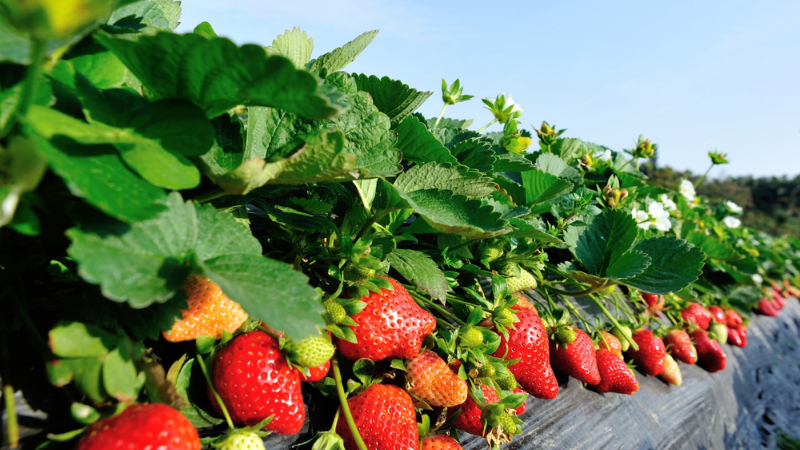Farmers See Progress in GPS-Guided Heavy Equipment

GPS systems in agriculture have helped revolutionize farming operations. Instead of pitchforks and horse-drawn plows, modern farmers rely on GPS-guided machinery to automate processes and work with higher precision. These advancements have yielded previously unheard-of levels of efficiency and will be vital to meeting the growing global demands for food.
Autonomous Tractors
GPS-enabled tractors are transforming how farmers plow their fields. Modern machinery equipped with auto-steer and guidance systems can interpret signals from satellites and follow predetermined paths with high precision. This setup enables accurate field mapping and eliminates human involvement in operations.
An example is the John Deere 8R 410 Autonomous Tractor, the first fully autonomous tractor sold in the U.S., which was unveiled at the 2022 Consumer Electronics Show. The machine features a state-of-the-art GPS receiver and six stereo cameras to detect obstacles and measure precise distances for mapping and navigation.
Precision Land Leveling Systems
Land leveling is essential to achieving a uniform and precise plane surface for agricultural processes. Traditional methods often relied on manual techniques, which were labor-intensive and time-consuming. These techniques were prone to human error, often resulting in uneven terrain that led to bigger problems, such as poor irrigation distribution, reduced crop yields and water stagnation.
In contrast, GPS land leveling systems harness the power of satellite-based positioning and computer technology to ensure improved accuracy and efficiency. These systems enhance field mapping and area data analysis, allowing farmers to cover every inch of the farmland and maintain a level surface across the topography. This approach enables optimal resource allocation and helps prevent soil erosion, both crucial to sustainability.
Mechanized Seeders
Seeders are vital to the planting phase of farming operations. Aided by advanced GPS systems, these heavy machines can precisely place seeds in the soil at predetermined intervals. This GPS-guided planting technique ensures uniform crop spacing and optimal seed use. It also allows farmers to plant seeds at the correct depths for improved germination and maximized yield potential.
Advanced mechanized seeders feature automatic on-and-off functionality that shuts off the machine when the GPS crosses into areas not designated for seeding. This automation enhances efficient farming operations and minimizes seed waste.
GPS Sprayer Guidance
In recent years, the GPS revolution has also benefited weed control and fertilizer application, improving precision and overall efficiency. Farmers rely on GPS guidance to precisely direct agricultural sprayers, ensuring consistent chemical application and preventing over-application, which in turn lessens environmental effects.
These systems are also essential to minimizing input costs since they allow farmers to apply products to exact areas with fewer operator errors and less wasted product. The University of Tennessee estimates that using GPS guidance systems for spraying fields can provide around 2%-7% input savings, depending on the size and shape of the field.
Getting the Most From GPS-Enabled Farming Equipment
Like any other piece of heavy machinery, GPS-guided farming equipment is subject to wear and tear and eventual breakdowns. Once this occurs, operations can grind to a sudden halt, impacting output for several hours or even days. This necessitates the presence of on-field troubleshooting professionals who can identify issues promptly and effect immediate corrective measures.
Proper farm machinery usage also requires ongoing staff education on the latest operational guidelines. Most equipment breakdowns result from human error, underscoring the need for proper training and on-site supervision. This is especially true for newer mechanical devices where simple damage to any of the multitude of moving parts can affect proper functioning.
In some cases, issues may arise from circumstances outside of the farmer’s control. For instance, the solar storm in May 2024 broke critical GPS and precision functionality in self-driving tractors, causing farmers to abruptly cease planting crops. A John Deere dealership announced the news, asking farmers to turn off their machinery for the weekend to avoid further complications. Such instances highlight the need to monitor manufacturers’ and associated professionals’ latest announcements and recommendations.
Enhance Farming Operations with GPS
As the population continues to soar, so will the demand for food production. GPS-guided machinery will be crucial to meeting this need by providing real-time insights that help farmers automate ground leveling, planting, fertilization, pest control and overall crop management. Adopting these systems will also be instrumental in pursuing resource efficiency and sustainability in future operations.









